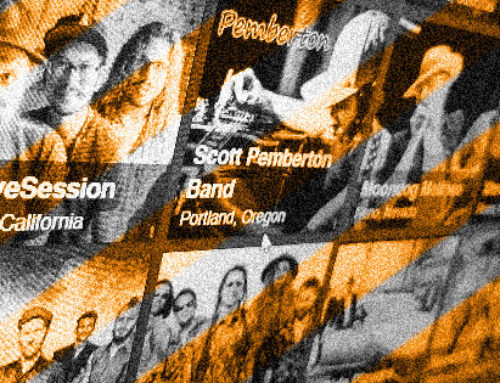Finding paid gigs, much like attracting new fans, requires consistent energy aimed at building relationships. You don’t need a ton of time, you just need a clear goal, a clear system for reaching out, and the ability to get creative with who receives your pitch. Here’s how to do all three.
1. Set a clear goal
First, decide how many gigs you’d ideally like to gain in a given month. Understand that not everyone will say yes, so take that number and multiply it by 10. That’s giving you a 10 percent conversion rate. That means for every 10 people you pitch an opportunity to, one person gives you a “yes.” That’s pretty high, but it’s only a starting place. If you want five yesses, expect to reach out (authentically!) to approximately 50 people.
It might sound like a lot, but don’t get discouraged. We’re going to break it down and keep your system simple and straight forward. And, given the reach of social media, you shouldn’t have any problem finding people to reach out to; it just takes a bit of organization and creativity.
So start be determining how many “yesses” you want so you’ll know how many people/venues you’ll ultimately need to reach out to in order to get those positive responses. Next, you’ll need a clear system for carrying out this plan.
3. Forge real connections
You don’t have to re-invent the wheel here. Leverage the contacts you already have. Let fellow artists/peers know who you’re looking to connect with/what types of people you’re looking to meet and why.
Outright ask them if they’d mind introducing you to people they know, or at the very least pass on an email and be cc’d on your initial contact. Having a mutual contact can do wonders for getting people to listen.
Also use resources like Facebook groups, Twitter chats, and in-person networking events to locate people with whom you want to build a relationship. Take time to think it through.
Decide what type of events your music works best for: will you be hunting down piano-bar owners or wedding planners? Do younger tweens love your music (think wealthy parents who need music for a Sweet 16), or do older adults rock out to your tunes (think 40th birthday blowout events)?
Consider the time of year as well. Would you do well to play to an incoming freshman class at a college orientation day in the summer or bring in the holiday spirit at a corporate Christmas party?
Don’t be in a rush. The industry is small. Making a good impression on a few people in the beginning will do more for spreading a strong, dependable, respected reputation for you and then use those connections to exponentially grow your network.
With a specific goal in mind (be it how many people you want to pitch to or how much you’re looking to make from a set amount of gigs), a plan on how to get there, and an open mind on who can help you along the way will take you from feeling like a freelancer, living gig-to-gig, to feeling like a music-preneur, owning the destiny of your career in music.
Suzanne Paulinski is a mindset coach and founder of The Rock/Star Advocate. She helps music industry professionals gain confidence and clarity in their goals with a healthy work/life balance. Her book,The Rock/Star Life Planner is now available on Amazon.
2. Create a clear system
The easiest way to make progress on landing paying gigs is to stay organized. Keep a spreadsheet of who you’re reaching out to and when.
Note in your calendar when you’ll ideally want to follow up with them, as many will be busy and may not respond right away. Consistency is key when landing opportunities and building momentum, so take away as much guess work and email chaos as possible by tracking who you’ve contacted and where you stand with them.
It’s also important to be clear on how you frame your pitch. Opening the doors to a “yes” begins with making the conversation about the other person. People open up when they feel you care about what they’ve got going on at the moment. The best way to do that is to show them what’s in it for them by working with you.
If you’re stuck on the “what’s in it for them” part, simply ask people you’ve already worked with to take a second and tell you what they got out of working with you, booking you, etc. Use the resources you have. Ask questions. Do your homework.
Once you know how you’ll tackle reaching out to the total number of people/venues you’ll need to reach your goal, you’ll want to determine who you’ll reach out to, and that’s where the creativity comes in to ensure you’re getting the most from the relationships you’ve already built.



